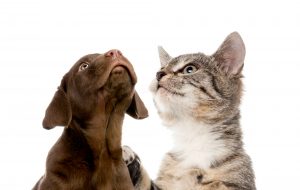The Ultimate Guide to Pet Insurance: Everything You Need to Know

As pet caretakers, we recognize the significance of safeguarding the health and overall welfare of our furry companions. However, unexpected accidents and illnesses can happen when we least expect them. Pet insurance offers financial protection for veterinary expenses, granting you peace of mind and the means to offer optimal care for your pet
What Is Pet Insurance And How Does It Work?
Pet insurance is similar to health insurance and can cover some or all of your veterinary costs. If you currently have a cat or dog living at home with you, you’ve undoubtedly discovered that veterinary expenses can be expensive. A comprehensive pet insurance plan can help soften the financial challenges of unexpected injuries or illnesses. These costs can be a financial strain and may lead to difficult decisions that a pet owner may not want to make.
Pet insurance can save you money in the long term. A good pet insurance policy should allow you to cover major medical or surgical procedures as well as the treatment of several chronic conditions (as long as they are not pre-existing) that persist over a long period. These conditions may include:
- Diabetes
- Epilepsy
- Hypothyroidism
- Cancer
- Pain (also a chronic condition)
- Osteoarthritis
- Hip dysplasia
- Congestive heart failure
- Kidney failure
- Eye failure
- Hearing loss
- Cognitive dysfunction Syndrome
Getting Payment From The Pet Insurance Company
Insurance companies (also known as “providers” or “carriers”) will likely ask you to submit paperwork or a medical history review from your veterinarian to process your claim, so be sure to save all receipts and documentation you receive from your vet appointment. Typically, pet insurance works on a reimbursement model similar to the below:
- Pay the vet bill during your visit.
- Submit a claim to your insurance company.
- Get reimbursed for a percentage of covered expenses (after your deductible is met)
Types of Pet Insurance Coverage

When it comes to pet insurance, there are several types of coverage options available. Understanding these options will help you choose the right policy for your pet’s needs. Here are the most common types of pet insurance coverage:
- Accident-Only: This coverage offers financial security for accidents, such as injuries resulting from car accidents, falls, or altercations with other animals. Typically, it does not extend to illnesses.
- Illness & Injury Coverage: Illness coverage includes medical expenses related to illnesses, such as infections, allergies, or chronic conditions. Illness coverage encompasses medical expenses associated with illnesses, including infections, allergies, or chronic conditions.
Factors to Consider When Choosing Pet Insurance
Choosing the right pet insurance policy can be overwhelming, given the variety of options, customizations, and plan terms available. When searching for a pet insurance policy, it’s important to consider the following factors when comparing different providers and policies:
- Coverage Limits: Review each policy’s coverage limits to ensure they meet your pet’s potential needs. Some policies have annual or lifetime limits, while others have no limits. It’s important to choose a policy that provides adequate coverage for your pet’s specific requirements.
- Reimbursement Rates: Different policies offer various levels of reimbursement rates, usually ranging from 70% to 100% of the veterinary bill. Consider how much you are willing to pay out of pocket and choose a policy that aligns with your budget.
- Deductibles: Deductibles can vary significantly between policies. Some have an annual deductible, meaning you only need to meet the deductible once per policy year, while others have a per-incident deductible, meaning you need to meet the deductible for each new condition or illness. Consider your pet’s health history and choose a deductible that makes financial sense for you.
- Waiting Periods: Most pet insurance policies have waiting periods before coverage begins. These waiting periods can vary from a few days to several weeks or months. Be sure to understand the waiting period for each policy, as it may impact your ability to receive coverage for certain conditions.
- Exclusions: Review the policy’s exclusions to understand what is not covered. Pre-existing conditions (an illness or other condition that was diagnosed prior to the policy’s effective date) are typically excluded from coverage. Additionally, some policies may exclude certain conditions, breed-specific issues, or hereditary conditions. It’s important to choose a policy that provides coverage for the potential health risks your pet may face.
- Customer Reviews: Research customer reviews and ratings of different pet insurance providers to gauge their reputation and customer service. Reading about other pet owners’ experiences can help you gauge the quality of service and claims process.
Factors to Consider When Comparing Pet Insurance Plans
There are many key factors to consider when comparing pet insurance plans.

Assessing Your Pet’s Needs and Health History:
Consider your pet’s age, breed, and pre-existing conditions. Review medical records and consult with a veterinarian to understand potential future health concerns, which helps in determining necessary coverage levels and benefits.
Evaluating Coverage Options and Limits:
Compare coverage options and limits of different pet insurance plans. Look for extensive coverage for accidents and illnesses, understanding that hereditary and pre-existing conditions are typically excluded. Consider policy limits, deductibles (either per visit or annual), and co-pays to find a balance between financial protection and premiums.
Reviewing Reimbursement Policies and Claim Processes:
Understand each provider’s reimbursement policy and claim process. Reimbursement can be based on the bill’s percentage or a benefit schedule. Evaluate how quickly claims are processed and if direct payment to the vet is available.
Comparing Premiums and Deductibles:
Consider premiums (monthly or annual payments) and deductibles (amount paid before insurance covers costs). Higher deductibles can lead to lower premiums, but it’s important to find a balance that suits your budget.
Researching Customer Reviews and Ratings:
Look at customer reviews and ratings for insights into service quality and satisfaction with the insurance company. Pay attention to feedback about claims processing, customer service, and usability of the company’s online resources.
Examining Additional Benefits and Discounts:
Investigate any extra benefits or discounts offered by insurance providers, such as coverage for alternative treatments, behavior training, prescription drugs, or boarding expenses in certain circumstances
For more detailed explanations, check out our blog, ‘Comparing Pet Insurance Plans: A Step-by-Step Guide.’
Factors That Affect Pet Insurance Costs
Regarding pet insurance costs, several factors are essential to assess the cost of coverage and make an informed decision. Here are some key factors that influence pet insurance costs:
Breed and Age
The breed and age of your pet play a significant role in determining the cost of pet insurance. Certain breeds are more likely to develop specific health conditions, which can increase the insurance premium. Essentially, older pets are costlier to insure because they demand more medical care, much like how an elderly person may face more frequent and complex health issues compared to a younger individual.
It’s important to note that some pet insurance companies place limits on coverage for certain breeds and include age restrictions. Others, like Odie Pet Insurance, provide coverage for all dog and cat breeds as young as seven weeks old, with no upper age restrictions.
Location
Pet insurance prices may differ based on your geographical location. Veterinary care costs can vary from one region to another, and this is reflected in the insurance premiums. Urban areas have higher veterinary costs, resulting in higher insurance rates.
Coverage Level
The level of coverage you choose for your pet will also impact the cost. Accident and Illness plans usually cost more than Accident-Only plans.
Deductibles and Copayments
Like other insurance policies, pet insurance comes with deductibles and copayments. A deductible is the sum you must pay before your insurance coverage begins, whereas a copayment is the portion of the total cost for which you are accountable. Higher deductibles and copayments can lower the insurance premium but increase out-of-pocket expenses.
Insurance Provider
Different insurance providers have other pricing structures and policies. That’s why it’s crucial to compare quotes from various providers to find the most suitable pet insurance coverage at the most competitive price. Customer service, claim process, and reputation should also be considered when choosing an insurance provider.
For more detailed explanations, check out our blog, The Cost of Pet Insurance: What to Expect and How to Save.
Understanding Pet Insurance Terms
When exploring pet insurance, you may come across unfamiliar terms Understanding these terms will help you navigate the world of pet insurance more confidently. Here are some common terms you may encounter:
- Premium: The amount you pay for your pet insurance policy, usually on a monthly or annual basis.
- Deductible: The amount you must pay out of pocket before the insurance coverage kicks in. Deductibles can be per-incident or annual.
- Reimbursement: The amount of money the insurance provider will pay you for covered veterinary expenses. Reimbursement rates can range from a fixed amount to a percentage of the total bill.
- Claim: A request for reimbursement submitted to the insurance provider after you have paid for veterinary services.
- Pre-Existing Condition: Any illness, injury, or symptom your pet had before the policy’s start date. Most pet insurance policies do not cover pre-existing conditions.
- Exclusion: A condition, treatment, or circumstance not covered by the policy. Exclusions can vary between policies, so it’s important to review them carefully.
- Waiting Period: You must wait before purchasing a policy before certain coverages become effective. Waiting periods can vary for different conditions and treatments.
- Annual Limit: The maximum amount the insurance provider will reimburse you in a policy year. Some policies may also have a lifetime limit, the maximum amount they will pay throughout your pet’s lifetime.
What Does Odie Pet Insurance Cover?
Pet insurance covers various veterinary expenses, providing financial protection and peace of mind for pet owners. Odie Pet Insurance offers comprehensive, flexible, and affordable plans, with options to add or remove various coverage options to fit your needs
Illness & Injury Plan
The Illness & Injury Plan is an all-inclusive insurance plan designed to cover a wide range of medical needs for your pet. This plan includes comprehensive coverage for various illnesses, injuries, and veterinary services. Some of the covered items include:
- 24/7 Televet Chat
- Emergency vet visits
- Overnight hospital stays
- IV Fluids & Medications
- Medical Supplies
- Surgeries
- MRI/CAT Scans
- Rehabilitative Care
- Prescription Medications
- Gastrointestinal issues
- Laboratory Tests
Accident-Only Plan
The Accident-Only Plan is designed for pet owners seeking coverage specifically for accidents. This plan provides financial protection for emergency veterinary care resulting from accidental injuries. It includes 90% reimbursement up to $10,000 each year, with a $250 annual deductible.
Here’s an overview of the Accident-Only Plan:
- Coverage for broken bones, sprains, eye injuries, and traumatic dental fractures.
- Coverage for wounds, including bite wounds, lacerations, snake bites, and bee stings.
- Veterinary treatments covered for accidental injuries include X-rays & ultrasounds, laboratory tests, emergency care, hospitalization, CT scan & MRI, and surgery.
The Wellness Plan Add-on
The Wellness Plan is an add-on for routine care coverage you can purchase with an insurance policy. It focuses on preventive care and covers routine veterinary services. Odie has two wellness plan options available:
Basic Plan:
- Covers services such as spay/neuter and teeth cleaning, rabies vaccination, flea & tick prevention, heartworm prevention, vaccination/titer, wellness exam, heartworm test or FELV screen, blood, fecal, parasite exam, microchip, urinalysis or ERD, and deworming.
- Reimbursement up to $305 per year.
Plus Plan:
- Ideal for puppies and kittens.
- Covers services such as spay/neuter and teeth cleaning, rabies vaccination, flea & tick prevention, heartworm prevention, vaccination/titer, wellness exam, heartworm test or FELV screen, blood, fecal, parasite exam, microchip, urinalysis or ERD, and deworming.
- Reimbursement up to $535 per year.
To better understand the different pet insurance providers and compare their offerings with Odie Pet Insurance, you can refer to our comprehensive Pet Insurance Comparison Guide.



